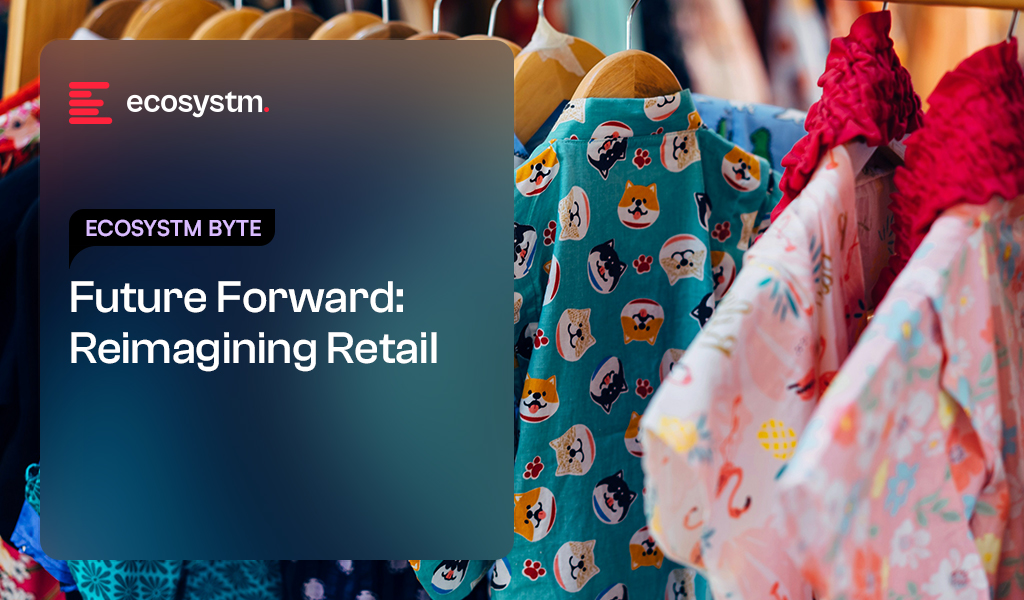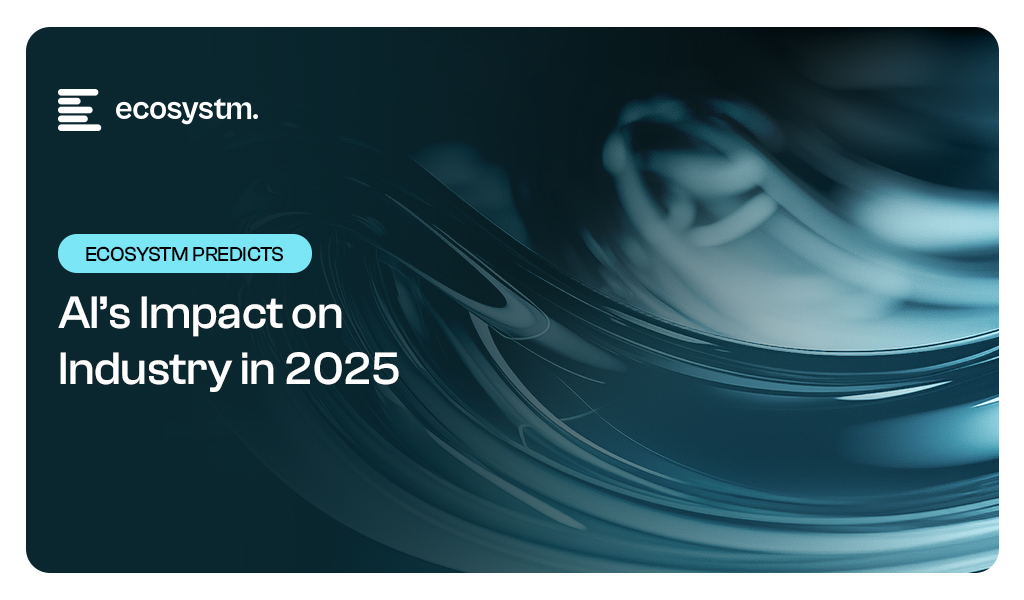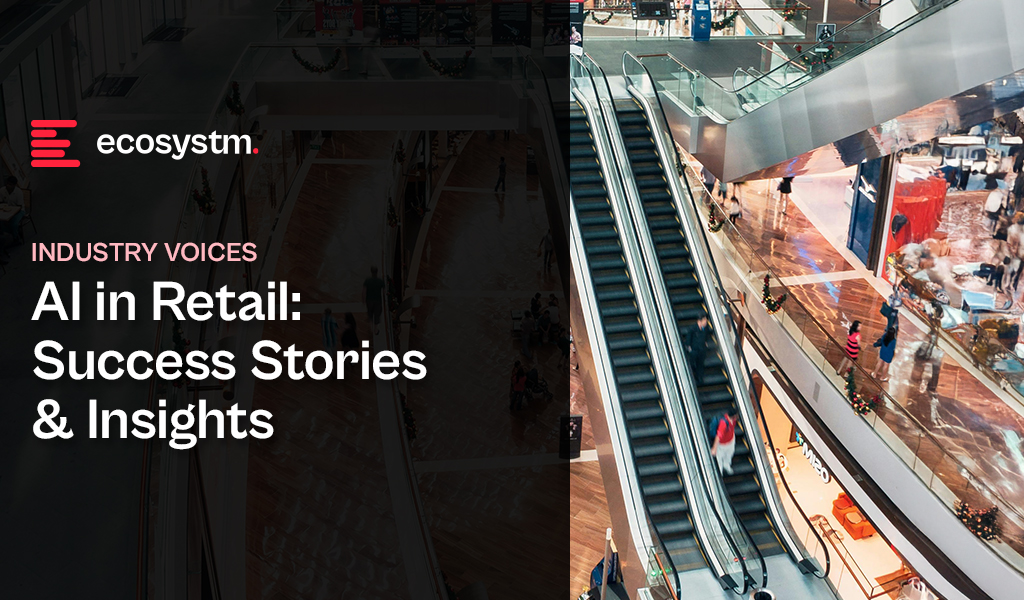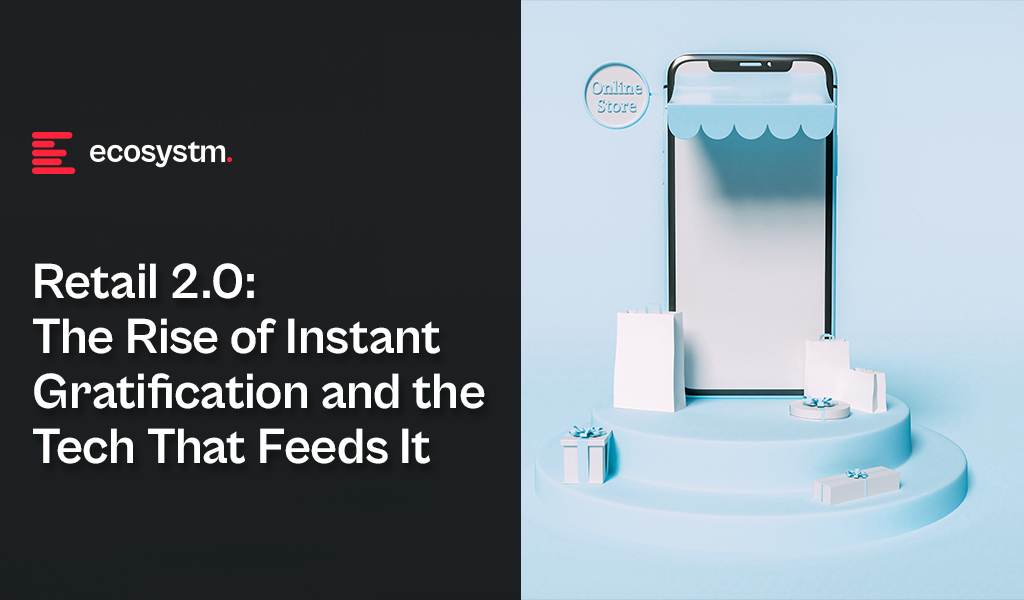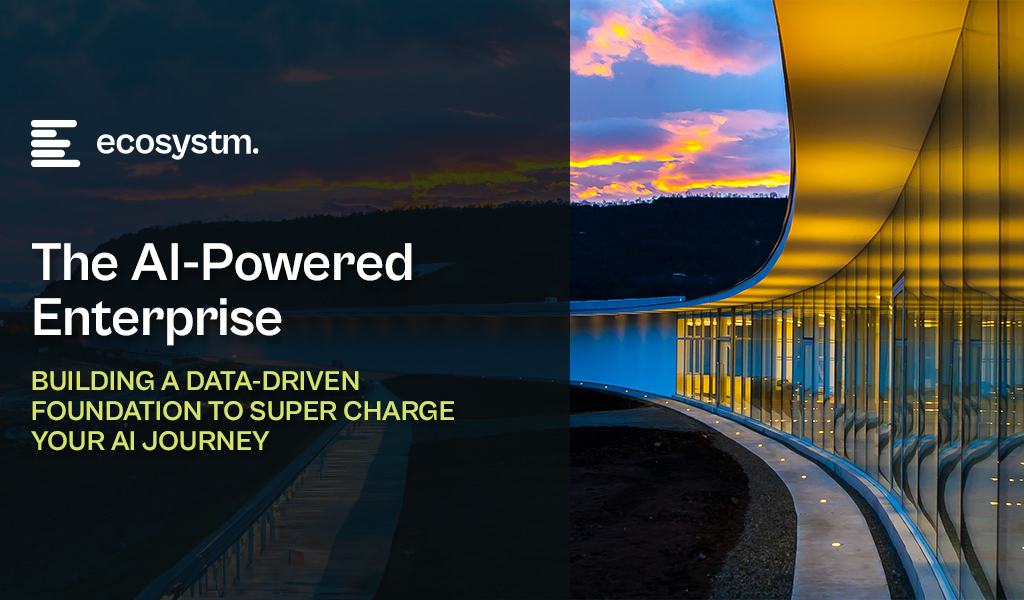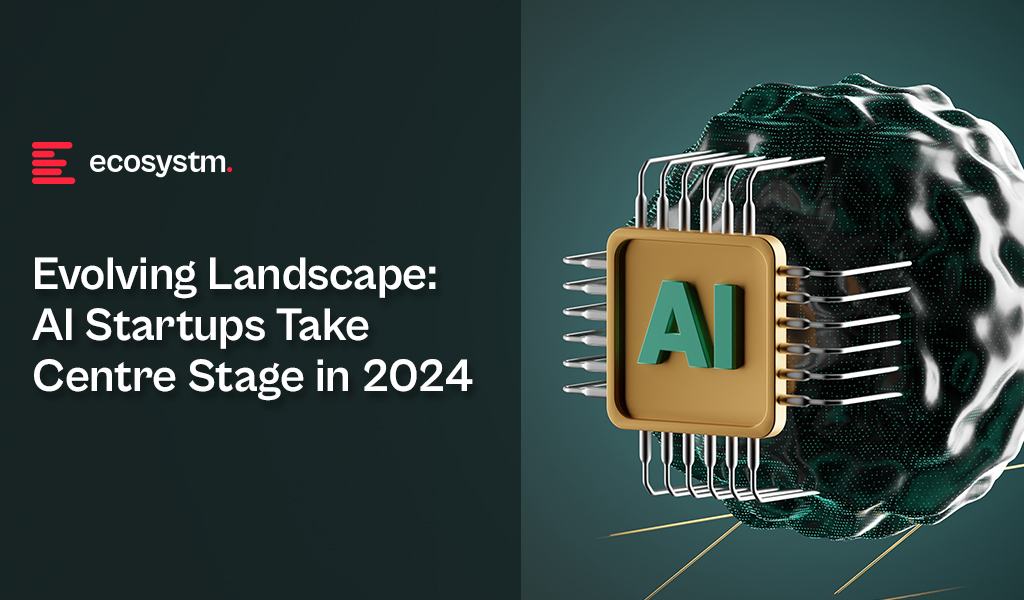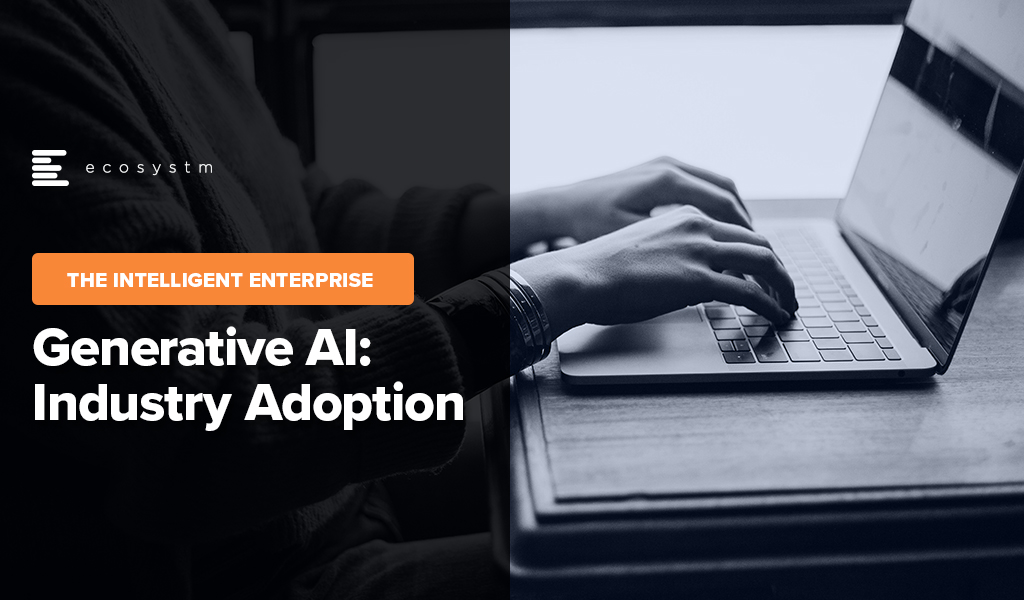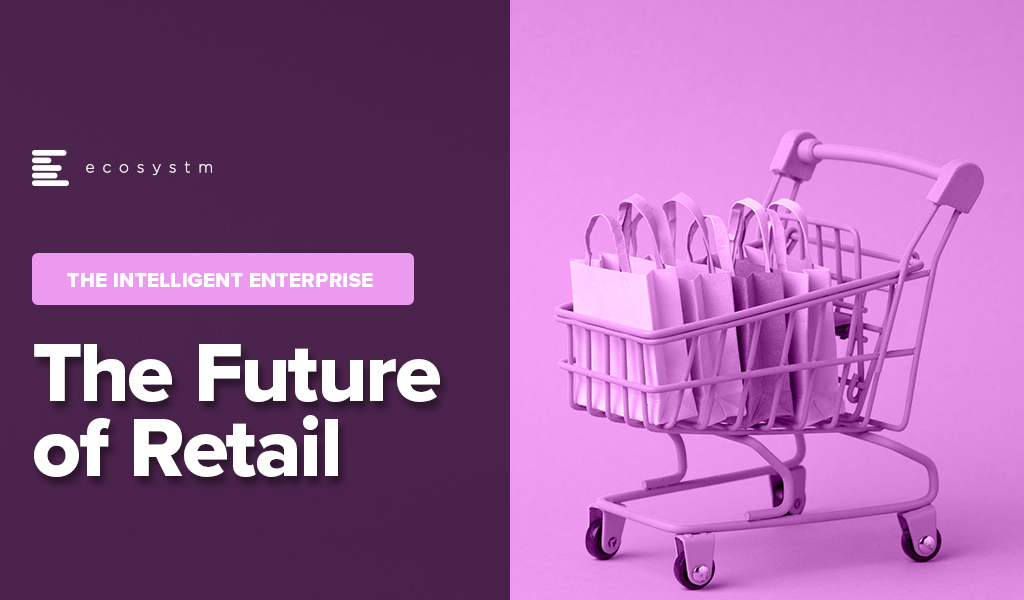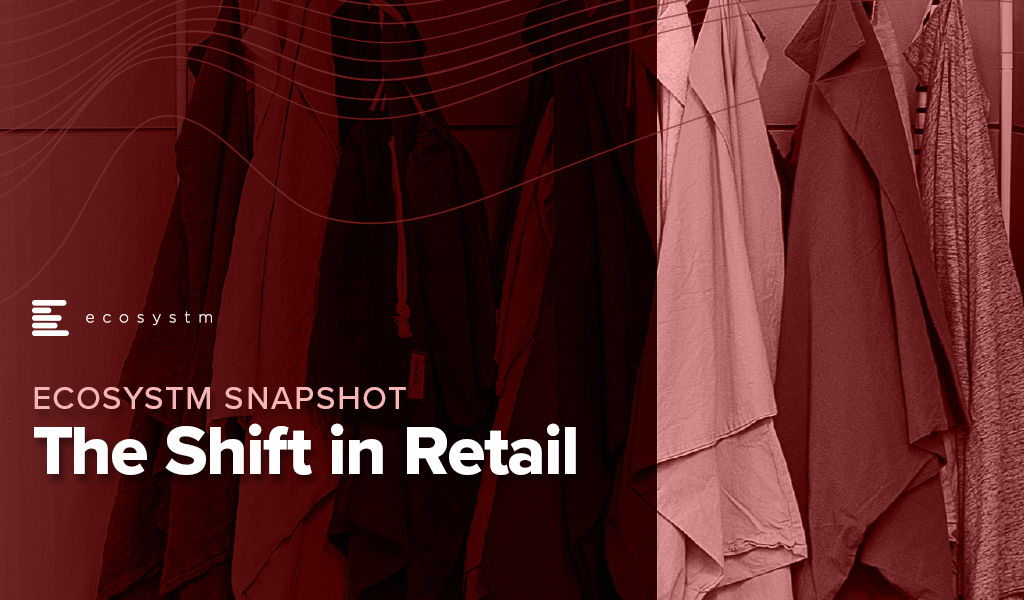Retail transformation is a continuous, dynamic journey of reinvention – driven by agility, experimentation, and the need to keep pace with ever-evolving consumer behaviour. It’s not a fixed destination but an ongoing process of innovation.
At its heart, retail transformation is about putting the customer squarely in control. It’s the strategic overhaul that allows retailers to truly understand individual desires, offering hyper-personalised journeys that blur the lines between online browsing and in-store discovery.

Click here to download “Future Forward: Reimagining Retail” as a PDF.
Enabling Growth with Smarter Sales and Distribution
India’s Tata Consumer Products, aiming to grow their FMCG market share, set out to digitise sales across the vast ‘kirana’-driven retail network.
The company replaced outdated tools with a system that streamlines distributor onboarding, order management, and retail execution – cutting setup times from days to minutes.
A mobile app gives field reps real-time inventory, auto-applied promos, and personalised KPIs, while dashboards give managers live territory insights. Built in seven months, the platform now handles 6M+ transactions monthly, supports 8,000 reps, 12,000 distributors, and 1.6M outlets. Centralised service and rapid feature rollouts keep Tata Consumer fast, responsive, and customer-focused.
Addressing Legacy Limitations
One of New Zealand’s leading grocery retailer, Foodstuffs South Island, faced growing limitations from aging ERP systems and hardware nearing end-of-life.
Instead of reinvesting in outdated tech, FSSI launched Project Petra – a leap to a unified, cloud-based ERP platform.
The shift enabled intelligent replenishment, robotic automation, and a vastly improved user experience. In 18 months, FSSI streamlined roles, rebuilt core apps, and completed a smooth go-live in just three days. The payoff: forecasting and replenishment times cut by up to 50%, faster transactions, seamless price updates, and real-time insights. What began as a tech upgrade became a full transformation – boosting agility, empowering teams, and fuelling future-ready growth.
Streamlining Workflows, Empowering Employees
UCC Group, the Japanese coffee pioneer, is brewing a transformation internally. With 88 locations across 21 countries, UCC faced mounting inefficiencies from outdated legacy systems – slow, complex workflows and clunky portals that frustrated employees and slowed approvals.
UCC replaced their legacy systems with a cloud-first, mobile-first platform.
VPNs were eliminated. Approvals that once took multiple logins now take one tap. A clean, co-designed portal replaced the old interface, putting ease of use first. E-signatures and digitised requests cut paper use by 90% – over 1.5 million forms saved. A new life-event portal launched in just one month, proving speed and simplicity can coexist. Now expanding globally, UCC is unifying ERP, data, and apps into a single, employee-first hub – built for scale, speed, and the future.
Scaling Customer Experience at Speed
Aditya Birla Fashion Retail Limited (ABFRL) faced the challenge of scaling their multi-brand presence without compromising customer experience. As growth surged across stores, online platforms, and marketplaces, their order management system struggled to keep up – putting fulfillment speed, accuracy, and satisfaction at risk.
To solve this, ABFRL implemented a scalable, multi-instance order management solution that streamlined inventory tracking, fulfillment, and refunds.
The result: 99.5% faster inventory sync, zero refund failures, smarter order decisions, and accurate delivery estimates across all channels. This strategic overhaul helped ABFRL maintain service excellence while fuelling sustainable growth – proving that operational agility is key to scaling customer experience at speed.
Solving Reliability & Scalability Challenges
Chicks Lifestyle is a trusted home-grown brand in Hong Kong known for quality innerwear and thermal wear. As they expanded online and geared up for sustainable growth, outdated on-prem systems began to strain under peak-season pressure – causing crashes, long checkout lines, and customer frustration.
To fix this, they migrated their core ERP and POS systems to the cloud in just six weeks with zero data loss.
The result: 99.99% uptime, 30% jump in efficiency, 15% faster checkouts, and 40% lower IT costs. Loyalty data access dropped from minutes to seconds, enabling personalised service at scale. With a stable, scalable tech backbone in place, Chicks Lifestyle is now exploring AI to power their next phase of innovation.

AI has already had a significant impact on the tech industry, rapidly evolving software development, data analysis, and automation. However, its potential extends into all industries – from the precision of agriculture to the intricacies of life sciences research, and the enhanced customer experiences across multiple sectors.
While we have seen the widespread adoption of AI-powered productivity tools, 2025 promises a bigger transformation. Organisations across industries will shift focus from mere innovation to quantifiable value. In sectors where AI has already shown early success, businesses will aim to scale these applications to directly impact their revenue and profitability. In others, it will accelerate research, leading to groundbreaking discoveries and innovations in the years to come. Regardless of the specific industry, one thing is certain: AI will be a driving force, reshaping business models and competitive landscapes.
Ecosystm analysts Alan Hesketh, Clay Miller, Peter Carr, Sash Mukherjee, and Steve Shipley present the top trends shaping key industries in 2025.
Click here to download ‘AI’s Impact on Industry in 2025’ as a PDF
1. GenAI Virtual Agents Will Reshape Public Sector Efficiency
Operating within highly structured, compliance-driven environments, public sector organisations are well-positioned to benefit from GenAI Agents.
These agents excel when powered LLMs tailored to sector-specific needs, informed by documented legislation, regulations, and policies. The result will be significant improvements in how governments manage rising service demands and enhance citizen interactions. From automating routine enquiries to supporting complex administrative processes, GenAI Virtual Agents will enable public sector to streamline operations without compromising compliance. Crucially, these innovations will also address jurisdictional labour and regulatory requirements, ensuring ethical and legal adherence. As GenAI technology matures, it will reshape public service delivery by combining scalability, precision, and responsiveness.
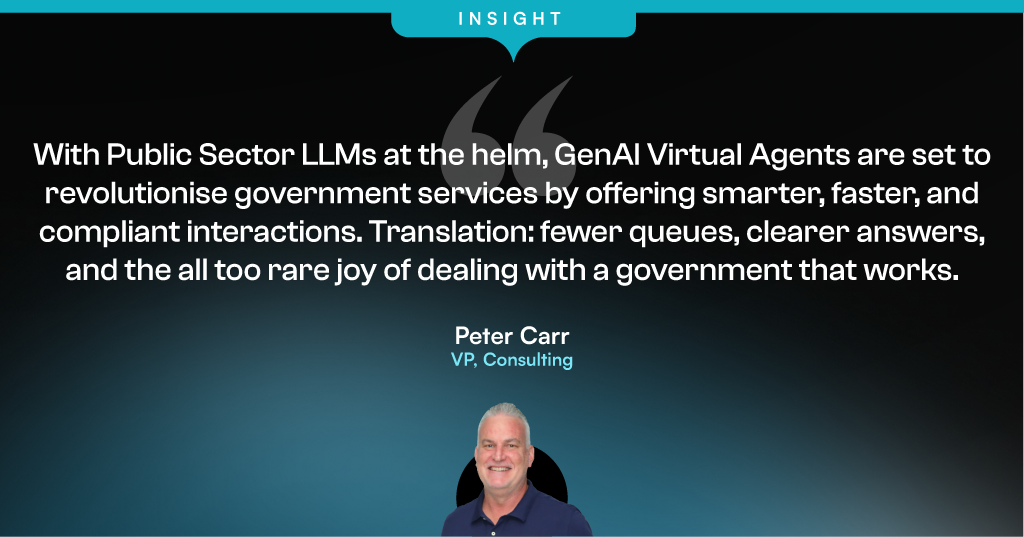
2. Healthcare Will Lead in Innovation; Lag in Adoption
In 2025, healthcare will undergo transformative innovations driven by advancements in AI, remote medicine, and biotechnology. Innovations will include personalised healthcare driven by real-time data for tailored wellness plans and preventive care, predictive AI tackling global challenges like aging populations and pandemics, virtual healthcare tools like VR therapy and chatbots enhancing accessibility, and breakthroughs in nanomedicine, digital therapeutics, and next-generation genomic sequencing.
Startups and innovators will often lead the way, driven by a desire to make an impact.
However, governments will lack the will to embrace these technologies. After significant spending on crisis management, healthcare ministries will likely hesitate to commit to fresh large-scale investments.

3. Agentic AI Will Move from Bank Credit Recommendation to Approval
Through 2024, we have seen a significant upturn in Agentic AI making credit approval recommendations, providing human credit managers with the ability to approve more loans more quickly. Yet, it was still the mantra that ‘AI recommends—humans approve.’ That will change in 2025.
AI will ‘approve’ much more and much larger credit requests.
The impact will be multi-faceted: banks will greatly enhance client access to credit, offering 24/7 availability and reducing the credit approval and origination cycle to mere seconds. This will drive increased consumer lending for high-value purchases, such as major appliances, electronics, and household goods.

4. AI-Powered Demand Forecasting Will Transform Retail
There will be a significant shift away from math-based tools to predictive AI using an organisation’s own data. This technology will empower businesses to analyse massive datasets, including sales history, market trends, and social media, to generate highly accurate demand predictions. Adding external influencing factors such as weather and events will be simplified.
The forecasts will enable companies to optimise inventory levels, minimise stockouts and overstock situations, reduce waste, and increase profitability. Early adopters are already leveraging AI to anticipate fashion trends and adjust production accordingly.
No more worrying about capturing “Demand Influencing Factors” – it will all be derived from the organisation’s data.
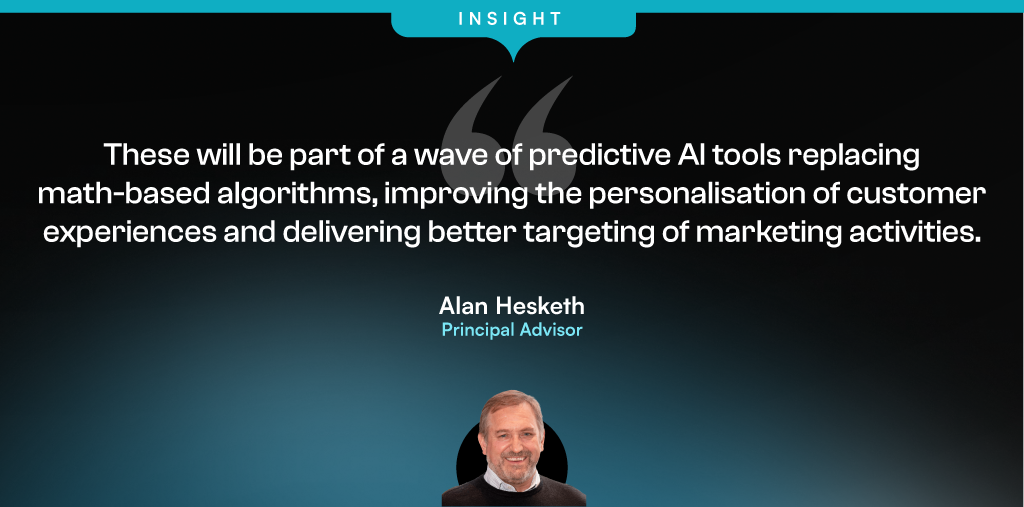
5. AI-Powered Custom-Tailored Insurance Will Be the New Norm
Insurers will harness real-time customer data, including behavioural patterns, lifestyle choices, and life stage indicators, to create dynamic policies that adapt to individual needs. Machine learning will process vast datasets to refine risk predictions and deliver highly personalised coverage. This will produce insurance products with unparalleled relevance and flexibility, closely aligning with each policyholder’s changing circumstances. Consumers will enjoy transparent pricing and tailored options that reflect their unique risk profiles, often resulting in cost savings. At the same time, insurers will benefit from enhanced risk assessment, reduced fraud, and increased customer satisfaction and loyalty.
This evolution will redefine the customer-insurer relationship, making insurance a more dynamic and responsive service that adjusts to life’s changes in real-time.
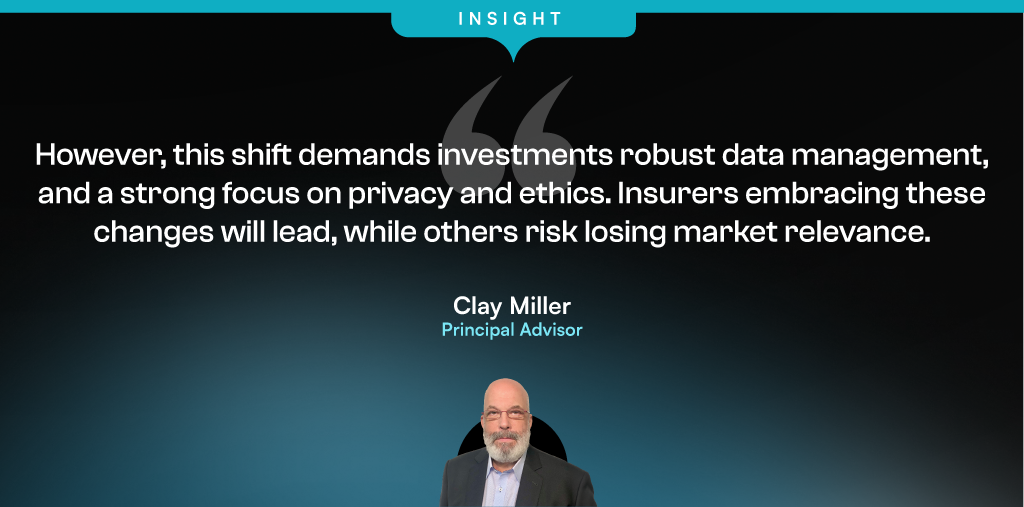

Over the past year, Ecosystm has conducted extensive research, including surveys and in-depth conversations with industry leaders, to uncover the most pressing topics and trends. And unsurprisingly, AI emerged as the dominant theme. Here are some insights from our research on the Retail industry.
Click here to download ‘AI in Retail: Success Stories & Insights’ as a PDF
From personalised product recommendations to predictive analytics, AI is helping retailers deliver exceptional customer experiences and optimise their operations. However, many retailers are still grappling with the complexities of AI implementation. Those who can successfully navigate this challenge and harness the power of AI will emerge as industry leaders, driving innovation and shaping the future of retail.

Despite the challenges, Retail organisations are witnessing early AI success in these 3 areas:
- 1. Customer Experience & Engagement
- 2. Supply Chain Optimisation
- 3. Fraud & Risk Analysis
Customer Experience & Engagement
- Conversational AI. Providing real-time customer support and answering queries
- Personalisation. Offering tailored product suggestions based on customer preferences and behaviour
- Virtual Try-On. Allowing customers to visualise products in different settings using AR
“AI has helped us to refine our customer chatbots to allow for more self-service. We’ve experienced faster customer order processing and quicker resolution of issues, putting control directly in the hands of our customers.” – CX LEADER
Supply Chain Optimisation
- Inventory Management. Automating inventory management processes to ensure optimal stock levels
- Supply Chain Visibility. Monitoring and optimising supply chain operations, including logistics and distribution
- Demand Forecasting. Predicting sales and demand trends to optimise inventory and production planning
“We use AI to optimise the supply chain, saving operational costs. Digital supply chains and cloud-based tracking systems streamline operations and enhance efficiency.” – CFO
Fraud & Risk Analysis
- Fraud Detection. Identify and prevent fraudulent activities, such as online fraud and chargebacks
- Risk Assessment. Assessing risk factors associated with customer transactions and preventing losses
- Customer & Market Insights. Understanding customer behaviour, market trends, and growth opportunities
“With eCommerce as a key market force, understanding customer habits is crucial to ensuring we have the right products in stock and optimising our pricing strategy.” – COO

Over a century ago, the advent of commercial flights marked a pivotal moment in globalisation, shrinking the time-distance between cities and nations. Less than a century later, the first video call foreshadowed a future where conversations could span continents in real time, compressing the space-distance between people.
The world feels smaller, not literally, but in how we experience space and time. Messages that once took days to deliver arrive instantly. Distances between cities are now measured in hours, not miles. A product designed in New York is manufactured in Shenzhen and reaches London shelves within weeks. In essence, things traverse the world with far less friction than it once did.
Welcome to The Immediate Economy!
The gap between desire and fulfilment has narrowed, driven by technology’s speed and convenience. This time-space annihilation has ushered in what we now call The Immediate Economy.
Such transformations haven’t gone unnoticed, at the click of a button is now a native (sort of cliché) expression. Amidst all this innovation, a new type of consumer has emerged – one whose attention is fleeting and easy to lose. Modern consumers have compelled industries, especially retail and ecommerce, to evolve, creating experiences that not only capture but also hold their interest.
Beyond Usability: Crafting a Memorable User Experience
Selling a product is no longer about just the product itself; it’s about the lifestyle, the experience, and the rush of dopamine with every interaction. And it’s all because of technology.
In a podcast interview with the American Psychological Association, Professor Gloria Mark from the University of California, Irvine, revealed a significant decline in attention spans on screens, from 150 seconds in 2004 to 40 seconds in the last five years. Social media platforms have spoiled the modern consumer by curating content that caters instantly to desires. Influence spills into the retail sector, compelling retailers to create experiences matching the immediacy and personalisation people now expect.
Modern consumers require modern retail experiences. Take Whole Foods, and their recent partnership with Amazon’s Dash Cart, transforming the mundane act of grocery shopping into a seamless dance of efficiency. Shoppers can now glide through aisles with carts that tally selections and debit totals directly from their accounts, rendering checkout lines obsolete. It’s more than convenience; it reimagines retail – a choreography of consumerism where every step is both effortless and calculated.
Whole Foods can analyse data from their Dash Cart technology to gain valuable insights into shopping patterns. The Immediate Economy revolutionises retail, transforming it into a hyper-efficient, personalised experience.
Retail’s new Reality: The Rise of Experiential Shopping
Just as Netflix queues up a binge-worthy series; retailers create shopping experiences as engaging and addictive as your favourite shows.
It’s been a financially rough year for Nike, but that hasn’t stopped them from expanding their immersive retail experience. Nike’s “House of Innovation” leverages 3D holographic tech. Customers can inspect intricate details of sneakers, including the texture of the fabric, the design of the laces, and the construction of the sole. The holographic display can also adjust to different lighting conditions and present the sneaker in various colours, providing a truly immersive and personalised shopping experience.
Fashion commerce platforms like Farfetch are among many integrating Virtual Try-On (VTO) technology. Leveraging the camera and sensors of customer devices, their AR technology overlays a digital image of a handbag onto a live view of a customer, enabling them to see how different styles and sizes would look on you. This approach to ecommerce enhances experiences, elevating interaction.
The 3D holographic display and the AR tech, are unique and visually appealing ways to showcase products, allowing customers to interact with products in a way that is not possible with traditional displays. Each shopping trip feels like the next episode of retail therapy.
The Evolution of Shopptertainment
The bar for quick content consumption is higher than ever thanks to platforms like TikTok and Instagram.
A prime example of this trend is Styl, a tech startup from two Duke students, with their “Tinder for shopping” application. Styl offers a swipeable interface for discovering and purchasing fashion items, seamlessly integrating the convenience and engagement of social media into the retail experience.
Styl goes beyond a simple swipe. By leveraging AI algorithms, it learns your preferences and curates a personalised feed of clothing items that align with your taste. Streamlining the shopping process, they deliver a tailored experience that caters to the modern consumer’s desire for convenience and personalisation.
Interestingly, Styl isn’t even a retail company; it pools items from websites, redirecting the users with relevant interest. They combine ecommerce with AI, creating the ultimate shopping experience for today’s customer. It’s fast, customised, and changing the way we shop.
Styl is not the first ones to do this, Instagram and TikTok provide individualised suggestions within their marketplace. But they differ by selling an experience, a vibe. That’s what sets them apart.

Tech-Powered Retail: The Heart of the Immediate Economy
History is filled with examples of societal innovation, but the Immediate Economy is transforming retail in exciting ways. In the 21st century, technology is both the catalyst and the consequence of the retail industry transformation. It began by capturing and fragmenting the average consumer’s attention, and now it’s reshaping consumer-brand relationships.
Today’s consumers crave personalised shopping. Whole Foods, with its AI-driven Dash Carts, is redefining convenience. Nike and Farfetch, through immersive AR and 3D tech, is making shopping an interactive adventure. Meanwhile, startups like Styl are leveraging AI to bring personalized fashion choices directly to consumers’ smartphones. The world is shrinking, not just in miles, but in the milliseconds it takes to satisfy a desire. From the aisles of Whole Foods to the virtual showrooms of Farfetch, The Immediate Economy offers an immersive world, where time and space bend to technology’s will, and instant gratification is no longer a perk; it’s an expectation. The Immediate Economy is here, and it’s changing how we interact with the world around us. Welcome to the future of retail, and everything else.

AI has become a business necessity today, catalysing innovation, efficiency, and growth by transforming extensive data into actionable insights, automating tasks, improving decision-making, boosting productivity, and enabling the creation of new products and services.
Generative AI stole the limelight in 2023 given its remarkable advancements and potential to automate various cognitive processes. However, now the real opportunity lies in leveraging this increased focus and attention to shine the AI lens on all business processes and capabilities. As organisations grasp the potential for productivity enhancements, accelerated operations, improved customer outcomes, and enhanced business performance, investment in AI capabilities is expected to surge.
In this eBook, Ecosystm VP Research Tim Sheedy and Vinod Bijlani and Aman Deep from HPE APAC share their insights on why it is crucial to establish tailored AI capabilities within the organisation.

The tech industry tends to move in waves, driven by the significant, disruptive changes in technology, such as cloud and smartphones. Sometimes, it is driven by external events that bring tech buyers into sync – such as Y2K and the more recent pandemic. Some tech providers, such as SAP and Microsoft, are big enough to create their own industry waves. The two primary factors shaping the current tech landscape are AI and the consequential layoffs triggered by AI advancements.
While many of the AI startups have been around for over five years, this will be the year they emerge as legitimate solutions providers to organisations. Amidst the acceleration of AI-driven layoffs, individuals from these startups will go on to start new companies, creating the next round of startups that will add value to businesses in the future.
Tech Sourcing Strategies Need to Change
The increase in startups implies a change in the way businesses manage and source their tech solutions. Many organisations are trying to reduce tech debt, by typically consolidating the number of providers and tech platforms. However, leveraging the numerous AI capabilities may mean looking beyond current providers towards some of the many AI startups that are emerging in the region and globally.
The ripple effect of these decisions is significant. If organisations opt to enhance the complexity of their technology architecture and increase the number of vendors under management, the business case must be watertight. There will be less of the trial-and-error approach towards AI from 2023, with a heightened emphasis on clear and measurable value.
AI Startups Worth Monitoring
Here is a selection of AI startups that are already starting to make waves across Asia Pacific and the globe.
- ADVANCE.AI provides digital transformation, fraud prevention, and process automation solutions for enterprise clients. The company offers services in security and compliance, digital identity verification, and biometric solutions. They partner with over 1,000 enterprise clients across Southeast Asia and India across sectors, such as Banking, Fintech, Retail, and eCommerce.
- Megvii is a technology company based in China that specialises in AI, particularly deep learning. The company offers full-stack solutions integrating algorithms, software, hardware, and AI-empowered IoT devices. Products include facial recognition software, image recognition, and deep learning technology for applications such as consumer IoT, city IoT, and supply chain IoT.
- I’mCloud is based in South Korea and specialises in AI, big data, and cloud storage solutions. The company has become a significant player in the AI and big data industry in South Korea. They offer high-quality AI-powered chatbots, including for call centres and interactive educational services.
- H2O.ai provides an AI platform, the H2O AI Cloud, to help businesses, government entities, non-profits, and academic institutions create, deploy, monitor, and share data models or AI applications for various use cases. The platform offers automated machine learning capabilities powered by H2O-3, H2O Hydrogen Torch, and Driverless AI, and is designed to help organisations work more efficiently on their AI projects.
- Frame AI provides an AI-powered customer intelligence platform. The software analyses human interactions and uses AI to understand the driving factors of business outcomes within customer service. It aims to assist executives in making real-time decisions about the customer experience by combining data about customer interactions across various platforms, such as helpdesks, contact centres, and CRM transcripts.
- Uizard offers a rapid, AI-powered UI design tool for designing wireframes, mockups, and prototypes in minutes. The company’s mission is to democratise design and empower non-designers to build digital, interactive products. Uizard’s AI features allow users to generate UI designs from text prompts, convert hand-drawn sketches into wireframes, and transform screenshots into editable designs.
- Moveworks provides an AI platform that is designed to automate employee support. The platform helps employees to automate tasks, find information, query data, receive notifications, and create content across multiple business applications.
- Tome develops a storytelling tool designed to reduce the time required for creating slides. The company’s online platform creates or emphasises points with narration or adds interactive embeds with live data or content from anywhere on the web, 3D renderings, and prototypes.
- Jasper is an AI writing tool designed to assist in generating marketing copy, such as blog posts, product descriptions, company bios, ad copy, and social media captions. It offers features such as text and image AI generation, integration with Grammarly and other Chrome extensions, revision history, auto-save, document sharing, multi-user login, and a plagiarism checker.
- Eightfold AI provides an AI-powered Talent Intelligence Platform to help organisations recruit, retain, and grow a diverse global workforce. The platform uses AI to match the right people to the right projects, based on their skills, potential, and learning ability, enabling organisations to make informed talent decisions. They also offer solutions for diversity, equity, and inclusion (DEI), skills intelligence, and governance, among others.
- Arthur provides a centralised platform for model monitoring. The company’s platform is model and platform agnostic, and monitors machine learning models to ensure they deliver accurate, transparent, and fair results. They also offer services for explainability and bias mitigation.
- DNSFilter is a cloud-based, AI-driven content filtering and threat protection service, that can be deployed and configured within minutes, requiring no software installation.
- Spot AI specialises in building a modern AI Camera System to create safer workplaces and smarter operations for every organisation. The company’s AI Camera System combines cloud and edge computing to make video footage actionable, allowing customers to instantly surface and resolve problems. They offer intelligent video recorders, IP cameras, cloud dashboards, and advanced AI alerts to proactively deliver insights without the need to manually review video footage.
- People.ai is an AI-powered revenue intelligence platform that helps customers win more revenue by providing sales, RevOps, marketing, enablement, and customer success teams with valuable insights. The company’s platform is designed to speed up complex enterprise sales cycles by engaging the right people in the right accounts, ultimately helping teams to sell more and faster with the same headcount.
These examples highlight a few startups worth considering, but the landscape is rich with innovative options for organisations to explore. Similar to other emerging tech sectors, the AI startup market will undergo consolidation over time, and incumbent providers will continue to improve and innovate their own AI capabilities. Till then, these startups will continue to influence enterprise technology adoption and challenge established providers in the market.

Generative AI is seeing enterprise interest and early adoption enhancing efficiency, fostering innovation, and pushing the boundaries of possibility. It has the potential of reshaping industries – and fast!
However, alongside its immense potential, Generative AI also raises concerns. Ethical considerations surrounding data privacy and security come to the forefront, as powerful AI systems handle vast amounts of sensitive information.
Addressing these concerns through responsible AI development and thoughtful regulation will be crucial to harnessing the full transformative power of Generative AI.
Read on to find out the key challenges faced in implementing Generative AI and explore emerging use cases in industries such as Financial Services, Retail, Manufacturing, and Healthcare.
Download ‘Generative AI: Industry Adoption’ as a PDF

The Retail industry has faced significant challenges in recent times. Retailers have had to deliver digital experiences and delivery models; navigate global supply chain disruptions; accommodate the remote work needs of their employees; and keep up with rapidly changing customer expectations. To remain competitive, many retailers have made significant investments in technology.
However, despite these investments, many retailers have struggled to create market differentiation. The need for innovation and constant evolution remains.
As retailers cope with hypersonalisation trends, supply chain vulnerabilities, and the rise of ESG consciousness, the industry is seeing several instances on innovation.
Read on to find out how brands such as Clinique, Gucci, Tommy Hilfiger, Nike, Woolworths, Prada, Levi Strauss, Mahsenei Hashuk and Instacart are using emerging technologies such as the Metaverse and Generative AI to create the much-needed market edge.
Download “The Future of Retail” as a PDF

It is true that the Retail industry is being forced to evolve the experiences they deliver to their customers. However, if Retail organisations are only focused on creating digital experiences, they are not creating the differentiation that will be required to leap ahead of the competition.
It is time for Retail organisations to leverage data to empower multiple roles across the organisation to prepare for the different ways customers want to engage with their brands.
So what are the phases of customer engagement? How are companies such as Singapore Airlines and TikTok preparing for the future of Retail?



